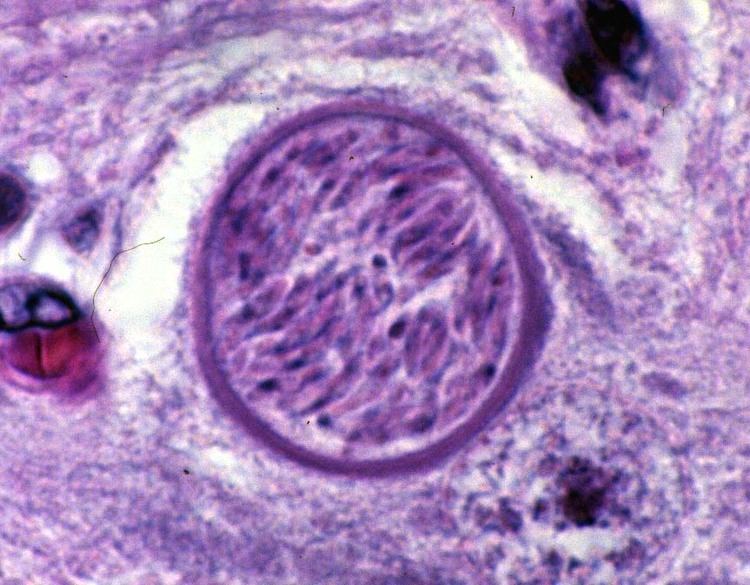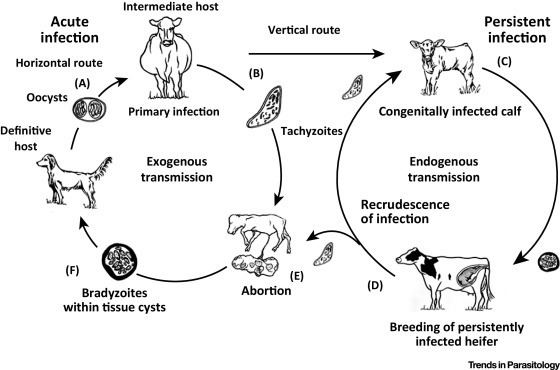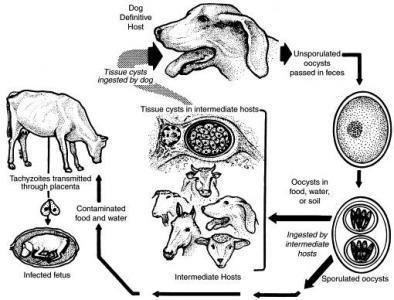Domain Eukaryota Subclass Coccidiasina Scientific name Neospora Rank Genus | Subfamily Toxoplasmatinae Higher classification Toxoplasmatinae | |
 | ||
Lower classifications Neospora caninum, Neospora hughesi | ||
Neospora caninum lip mec ufu
Neospora is a genus of important pathogens in cattle and dogs. It was not discovered until 1984 in Norway, where it was found in dogs. It is highly transmissible and some herds can have up to a 90% prevalence. Neospora causes abortions in cattle and up to 33% of pregnancies can result in aborted fetuses on one dairy farm. Diagnosis is hard because the parasite is not found in adults. The best way to detect the parasite is by its pathological effects on fetuses.
Contents

Neospora
Life cycle

The life cycle is similar to Toxoplasma. An infected dog will pass the oocysts through its feces and infect food or water. A cow or other animal will then up take the parasite. The parasite will undergo asexual reproduction in the animal's muscle until it is eaten by a dog. There, sexual reproduction will occur and oocysts will be created and passed through the feces.
Epidemiology
Dogs are often the definitive host but can act as an intermediate host as well. Cows are usually the intermediate host. No horizontal cow-to-cow transmission have been shown, although salival interactions have been suggested. Vertical transmission can occur when an infected cow gives birth to an infected calf—the calf survives the infection and grows into an adult.



